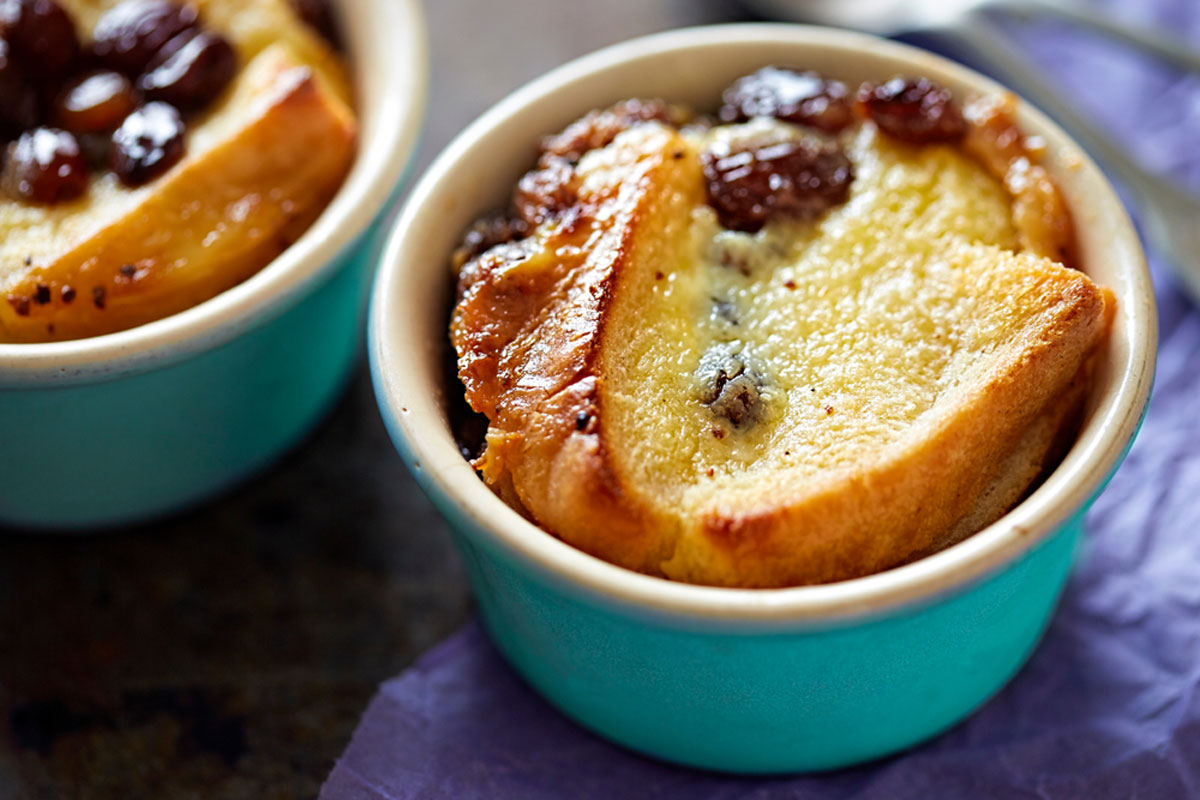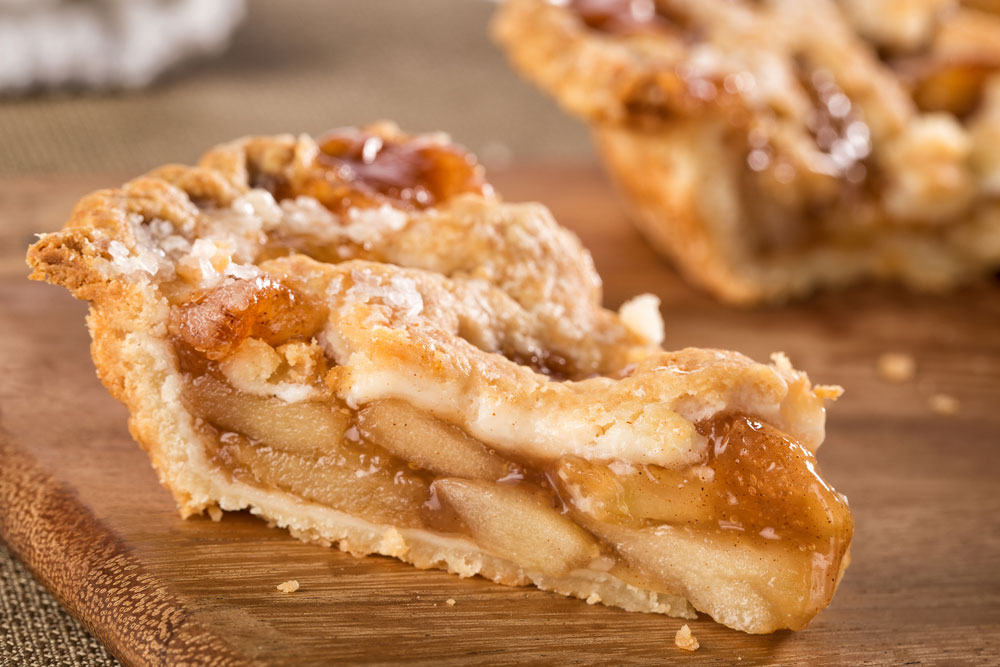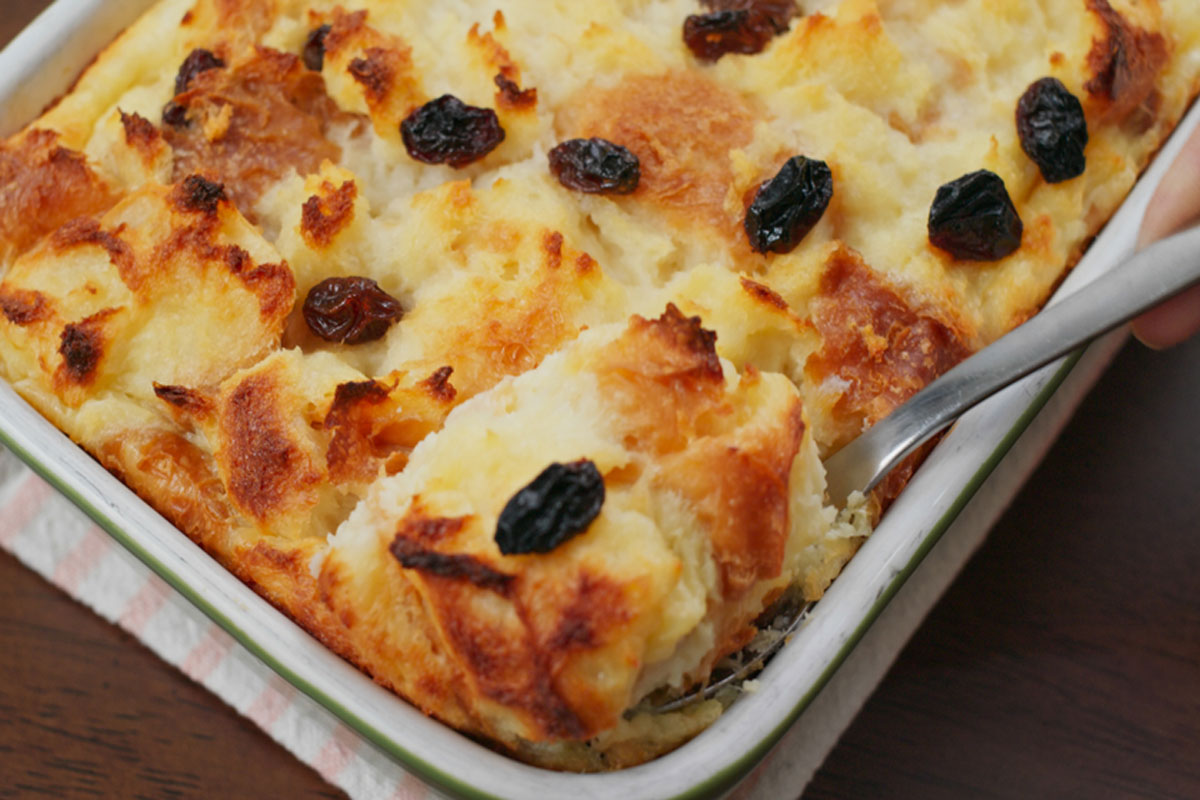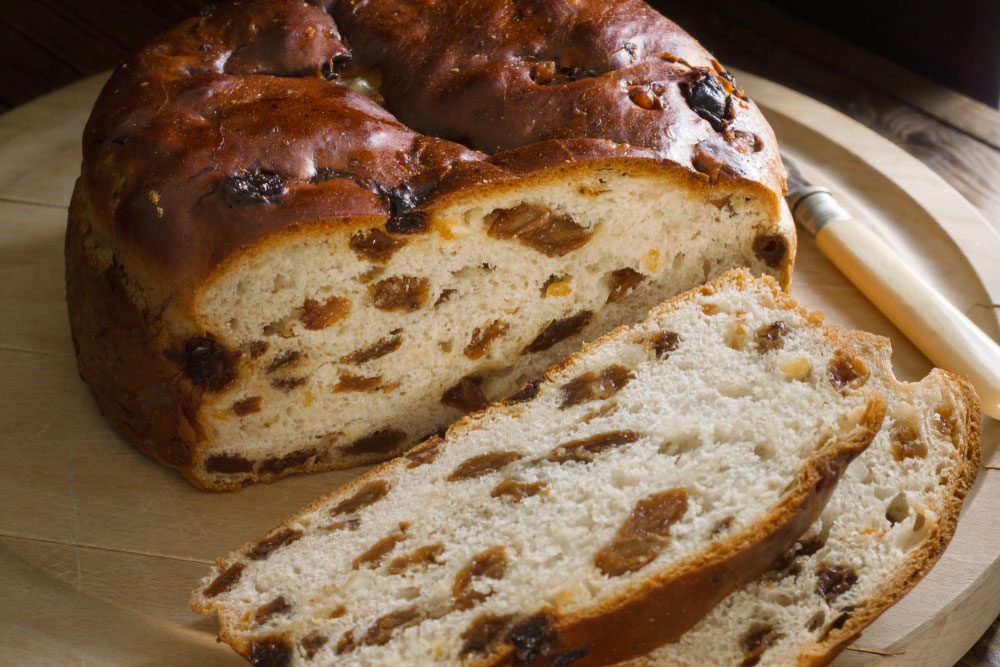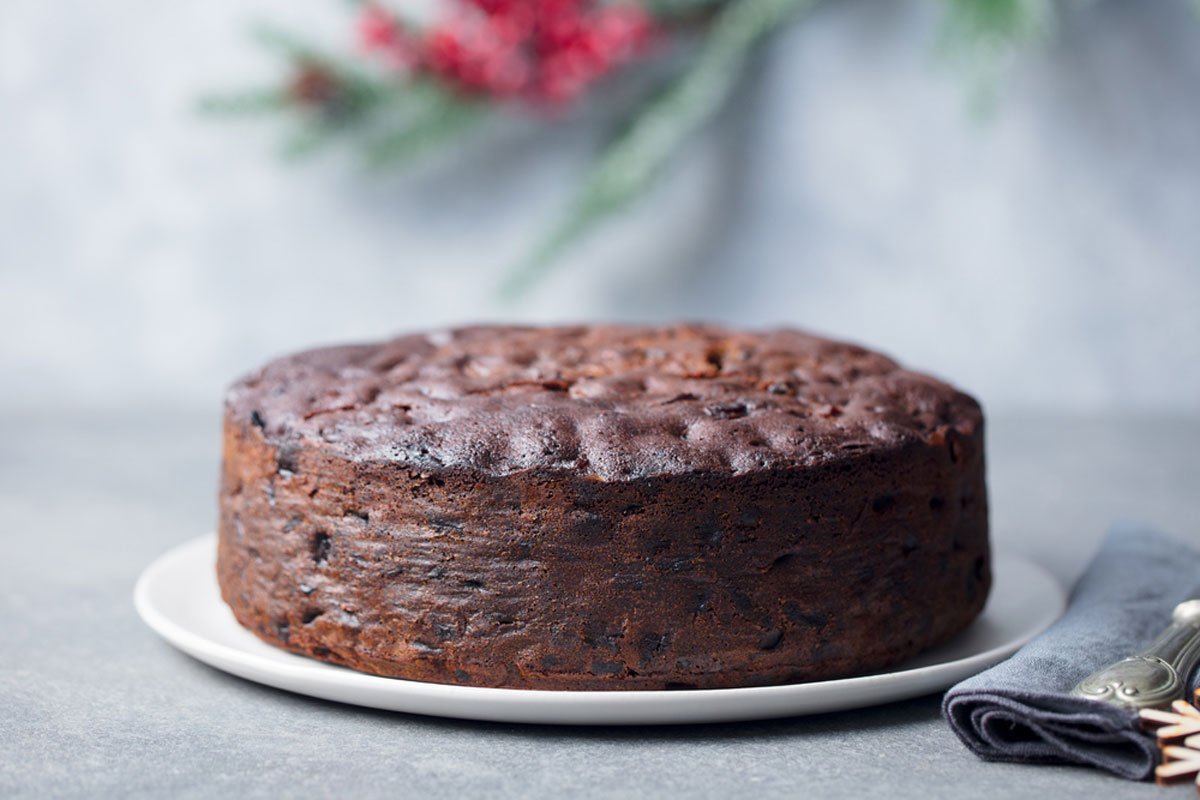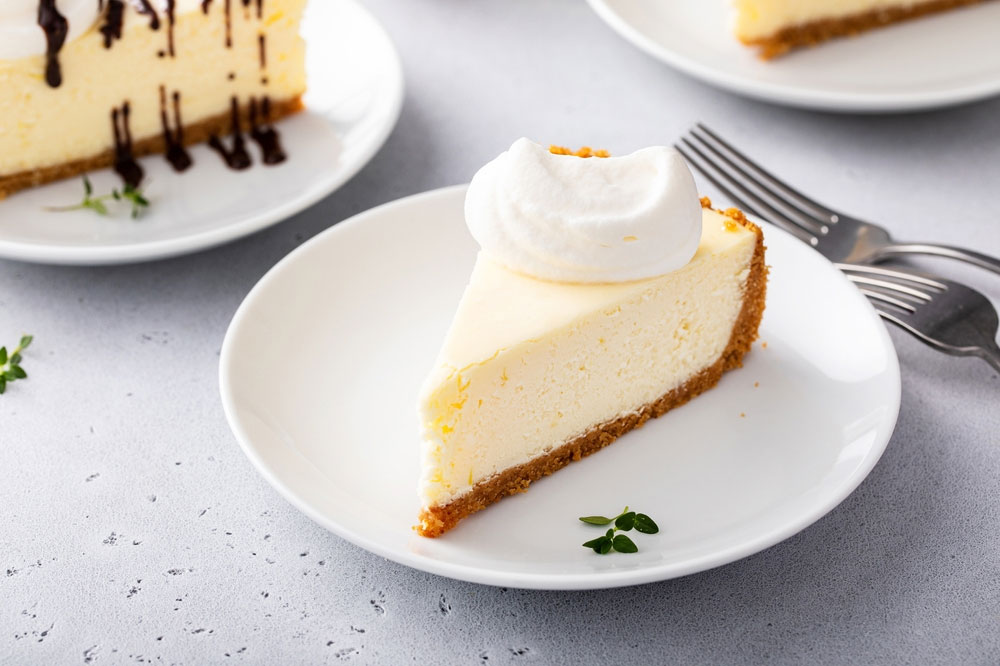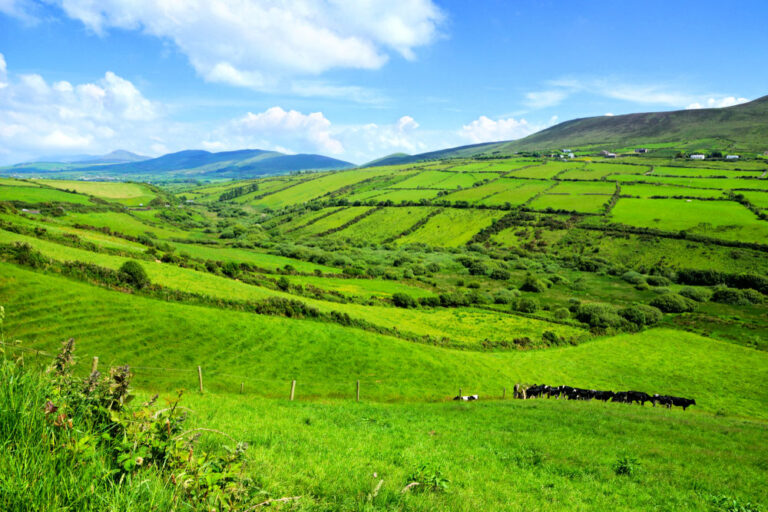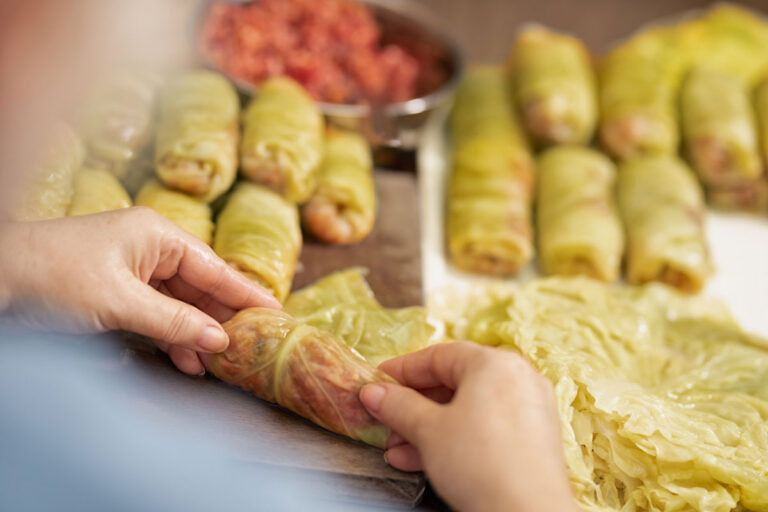The Classic Apple Tart
When it comes to Irish desserts, few treats are as beloved as the classic Apple Tart. This dessert, with its flaky pastry and tender, cinnamon-spiced apples, is a staple in Irish households and has been enjoyed for generations. It’s a simple yet satisfying dessert that captures the essence of traditional Irish baking—using fresh, local ingredients to create something comforting and delicious.
A Slice of History
The Irish Apple Tart dates back centuries, rooted in the country’s rich agricultural heritage. Apples have been grown in Ireland since medieval times, and their abundance made them a natural choice for baking. The tart itself reflects a no-nonsense approach to cooking: minimal ingredients, easy preparation, and a focus on flavor. Traditionally, the apples would be harvested from family orchards, and the pastry would be made by hand, often with butter churned at home.
What Makes It Unique?
Unlike its cousin, the American apple pie, the Irish Apple Tart is typically less sweet and uses a thinner layer of pastry. The filling is made with thinly sliced apples, usually Bramley or other tart varieties, which are lightly sweetened and spiced with cinnamon or nutmeg. The pastry, made with simple ingredients like flour, butter, and a pinch of sugar, is rolled out thinly to encase the apples. Once baked, the result is a dessert that’s crisp on the outside, tender on the inside, and perfectly balanced in flavor.
Variations Across Ireland
Though the basic recipe remains the same, there are regional variations to the Irish Apple Tart. In some parts of Ireland, the tart might be made with shortcrust pastry, while in others, puff pastry is preferred for a lighter, flakier texture. Some recipes call for the addition of raisins or sultanas, while others keep it strictly apples. There are even versions that include a drizzle of custard or a scoop of fresh cream on top, adding an extra layer of indulgence.
The Modern Revival
In recent years, there has been a resurgence of interest in traditional Irish desserts, with the Apple Tart leading the charge. It’s not uncommon to find it on the menu of high-end restaurants, served with a modern twist, such as a dollop of whiskey-infused cream or a scoop of artisan vanilla ice cream. However, it remains a cherished home-baked treat, especially during autumn when apples are in season.
How to Enjoy It
The Irish Apple Tart is best enjoyed warm, fresh out of the oven, with a cup of strong Irish tea. It can be served as is, or with a light dusting of powdered sugar. For those looking to elevate the experience, a side of whipped cream, custard, or ice cream adds a delightful contrast to the tartness of the apples and the richness of the pastry.
Description: Irish Apple Tart is a classic dessert that embodies the comforting flavors of tart apples, warm spices, and a buttery, flaky crust. This traditional tart is a favorite in many Irish households, especially during the autumn months when apples are at their best. The tart is often served with a dollop of fresh cream or a scoop of vanilla ice cream, making it a perfect treat for any occasion.
Preparation time: 25 minutes
Cooking time: 50 minutes
Serving size: 6-8 servings
Ingredients
For the Crust:
- 2 ½ cups all-purpose flour
- 1 cup cold unsalted butter, cubed
- 1 tsp salt
- 1 tbsp sugar
- 6-8 tbsp ice water
For the Filling:
- 6 large tart apples (Granny Smith or Bramley), peeled, cored, and sliced
- ¾ cup granulated sugar
- 1 tsp ground cinnamon
- ¼ tsp ground nutmeg
- 2 tbsp all-purpose flour
- 1 tbsp lemon juice
- 1 tbsp butter, cut into small pieces
For the Topping:
- 1 egg, beaten (for egg wash)
- 2 tbsp granulated sugar
Instructions:
Prepare the Crust:
- In a large bowl, combine the flour, salt, and sugar. Add the cold butter cubes and use a pastry cutter or your fingers to mix until the mixture resembles coarse crumbs.
- Gradually add ice water, one tablespoon at a time, and mix until the dough begins to come together. Divide the dough into two equal parts, flatten into disks, wrap in plastic wrap, and refrigerate for at least 30 minutes.
Prepare the Filling:
- In a large bowl, toss the sliced apples with sugar, cinnamon, nutmeg, flour, and lemon juice until well combined.
Assemble the Tart:
- Preheat the oven to 375°F (190°C).
- Roll out one disk of dough on a lightly floured surface to fit a 9-inch dish. Gently transfer the dough to the dish, leaving an overhang.
- Fill the tart crust with the apple mixture, dot with butter pieces, and then roll out the second disk of dough to cover the tart. Trim any excess dough, crimp the edges to seal, and cut a few slits on top for steam to escape.
- Brush the top crust with the beaten egg and sprinkle with sugar.
Bake:
- Bake the tart in the preheated oven for 50 minutes or until the crust is golden brown and the filling is bubbly.
- Allow the tart to cool slightly before serving.
Enjoy this Irish Apple Tart warm, with a generous serving of cream or ice cream.
Bread and Butter Pudding
Bread and Butter Pudding is a quintessentially Irish dessert that transforms simple, everyday ingredients into a rich and comforting treat. This dessert is the epitome of resourceful cooking, born out of a tradition of making the most of what you have. With layers of buttered bread, soaked in a luscious custard and baked until golden, Bread and Butter Pudding is both humble and indulgent—a dessert that has warmed Irish homes for generations.
A Tradition of Thriftiness
The origins of Bread and Butter Pudding can be traced back to a time when waste was simply not an option in Irish households. Stale bread, which might otherwise be discarded, was given new life in this dessert. By combining it with eggs, milk, sugar, and a bit of butter, a simple and satisfying pudding could be made to feed the whole family. This practical approach to cooking is a hallmark of Irish cuisine, where nothing goes to waste, and every ingredient is used to its fullest potential.
What Makes It So Special?
What sets Bread and Butter Pudding apart is its combination of textures and flavors. The bread, typically white or brown, is sliced and generously buttered before being layered in a baking dish. A custard mixture, made with eggs, milk (or cream), sugar, and a hint of vanilla or nutmeg, is poured over the bread, allowing it to soak into every crevice. As the pudding bakes, the top becomes crisp and golden, while the inside remains soft and custardy. The contrast between the crunchy, buttery top and the creamy, tender interior is what makes this dessert so irresistible.
Regional Twists and Additions
While the basic recipe remains consistent across Ireland, there are countless variations of Bread and Butter Pudding, each adding its own unique touch. Some versions include sultanas, raisins, or currants, scattered between the layers of bread for a burst of sweetness. Others might incorporate a splash of whiskey or Baileys Irish Cream into the custard, giving the pudding a deeper, more complex flavor. In some regions, marmalade or jam is spread on the bread before it’s buttered, adding a fruity note to the dish.
A Dessert for All Occasions
Bread and Butter Pudding is a versatile dessert that can be served on any occasion. It’s comforting enough for a casual family dinner but can be dressed up for a special event with a drizzle of caramel sauce or a scoop of ice cream. It’s also a favorite during the colder months, providing a warm, hearty finish to a meal. Despite its simplicity, it carries a sense of nostalgia, reminding many of the comforting meals of their childhood.
The Revival of a Classic
Like many traditional Irish desserts, Bread and Butter Pudding has seen a revival in recent years. Chefs and home cooks alike are rediscovering its appeal, experimenting with different types of bread, such as brioche or croissants, to create a more luxurious version of the classic. Modern variations might include flavors like chocolate, banana, or even savory twists, but the essence of the dish remains the same: a celebration of simple, comforting flavors.
Description: Bread and Butter Pudding is a traditional British dessert that has also become a beloved classic in Ireland. It’s a comforting dish made from slices of bread (often slightly stale), layered with butter, raisins, and custard, then baked until golden and crispy on top. This dessert is perfect for using up leftover bread and creates a warm, creamy, and flavorful treat.
Preparation Time: 20 minutes
Cooking Time: 45 minutes
Serving Size: Serves 6
Ingredients:
- 6 slices of day-old white bread
- 50g (1/4 cup) unsalted butter, softened
- 100g (1/2 cup) raisins or sultanas
- 3 large eggs
- 350ml (1 1/2 cups) whole milk
- 150ml (2/3 cup) heavy cream
- 75g (1/3 cup) granulated sugar
- 1 teaspoon vanilla extract
- 1/2 teaspoon ground cinnamon (optional)
- Zest of 1 lemon (optional)
Instructions:
- Preheat the Oven: Preheat your oven to 180°C (350°F). Grease a 1.5-liter (6-cup) baking dish with butter.
- Prepare the Bread: Butter the slices of bread on one side. Cut each slice into triangles or squares, then layer half of the bread in the greased baking dish, buttered side up.
- Add Raisins: Sprinkle half of the raisins over the bread layer. Then add another layer of buttered bread, followed by the remaining raisins.
- Make the Custard: In a mixing bowl, whisk together the eggs, milk, cream, sugar, vanilla extract, and cinnamon until well combined. If using, add the lemon zest for extra flavor.
- Assemble the Pudding: Pour the custard mixture over the bread layers, ensuring all the bread is soaked. Gently press the bread down to help it absorb the custard.
- Bake: Let the pudding sit for 10 minutes to allow the bread to fully absorb the custard. Then, bake in the preheated oven for 40-45 minutes, or until the top is golden brown and the custard is set.
- Serve: Let the pudding cool slightly before serving. It’s delicious served warm with a dollop of whipped cream, a scoop of vanilla ice cream, or a drizzle of custard.
Enjoy this heartwarming dessert that combines simplicity with rich flavors, making it an excellent addition to any meal or special occasion.
Irish Carrageen Moss Pudding
Irish Carrageen Moss Pudding is a unique dessert that highlights the natural bounty of Ireland’s coastlines. Made from carrageen moss, a type of red seaweed found along the rocky shores, this pudding is a testament to the resourcefulness and ingenuity of Irish cooking. Delicately flavored and with a texture akin to panna cotta, Carrageen Moss Pudding is a true taste of the sea, offering a light and refreshing end to a meal.
A Seaweed with a Storied Past
Carrageen moss, also known as Irish moss, has been harvested in Ireland for centuries, valued for its gelling properties and health benefits. During times of scarcity, especially in the 19th century, it became a crucial food source. The seaweed is rich in carrageenan, a natural thickening agent, which, when boiled, releases gelatin-like properties. This made it an ideal ingredient for creating a smooth, creamy pudding without the need for eggs or traditional gelatin.
The Making of a Coastal Dessert
The process of making Carrageen Moss Pudding is simple, yet it requires a bit of patience. The dried moss is soaked in water to rehydrate it, then simmered in milk until the liquid thickens, extracting the seaweed’s natural gelling properties. The mixture is then strained to remove the seaweed, leaving behind a silky, smooth base. This is typically sweetened and flavored with vanilla, lemon, or even whiskey, and then left to set in a cool place. Once set, the pudding is light, with a subtle flavor and a slightly wobbly texture.
A Delicate Balance of Flavors
What makes Carrageen Moss Pudding so special is its delicate balance of flavors. The pudding itself is mildly sweet, with a gentle hint of the sea from the carrageen moss. This is often complemented by a touch of vanilla or a squeeze of lemon juice, which adds brightness and depth. Some versions might include a bit of honey or a drizzle of fruit compote on top, but the simplicity of the pudding is what truly shines through.
A Dessert with Health Benefits
Beyond its culinary appeal, Carrageen Moss Pudding is also valued for its health benefits. Carrageen moss is known for its high mineral content, particularly iodine, calcium, and magnesium. It’s also believed to have soothing properties for the digestive system, making it a popular remedy in traditional Irish medicine. This connection between food and health is a key aspect of Irish culinary traditions, where ingredients are often chosen for their nutritional benefits as much as for their flavor.
A Taste of Tradition in Modern Times
While Carrageen Moss Pudding might not be as widely known as other Irish desserts, it has experienced a resurgence in recent years. Chefs and food enthusiasts are rediscovering this traditional dessert, often serving it with modern twists, such as pairing it with fresh berries, citrus zest, or even infusing it with herbal teas. It’s a dessert that connects the past with the present, offering a taste of Ireland’s coastal heritage in every bite.
Irish Barmbrack
Irish Barmbrack is a beloved sweet bread that carries with it centuries of tradition and a deep cultural significance. Known for its moist, fruity interior and slightly crisp crust, Barmbrack is often enjoyed as a treat with a cup of tea, especially during the autumn months. This iconic Irish bread is much more than just a dessert—it’s a symbol of celebration, particularly around Halloween, when it takes on a special role in Irish folklore.
A Bread with Ancient Roots
Barmbrack, sometimes referred to simply as “brack,” comes from the Irish word “báirín breac,” which means “speckled loaf.” The speckling refers to the rich mix of dried fruits that are scattered throughout the bread. Traditionally, Barmbrack was made as a yeast bread, though many modern versions use baking powder for a quicker rise. The bread’s origins date back to the harvest festivals of ancient Ireland, where it was baked to mark the end of the agricultural year and the beginning of winter.
The Ritual of the Barmbrack
Barmbrack is most famously associated with Halloween, or Samhain, as it was originally known in Ireland. This ancient Celtic festival marked the end of the harvest season and the beginning of winter, a time when the veil between the worlds of the living and the dead was believed to be at its thinnest. To celebrate, a Barmbrack would be baked with various items hidden inside, each carrying a different meaning. These might include a coin (signifying wealth), a ring (indicating marriage), a thimble (for spinsterhood), and other symbolic objects. The ritual of cutting the Barmbrack and discovering one’s fortune for the coming year is a tradition that continues in many Irish households today.
The Ingredients that Make It Special
What sets Barmbrack apart from other sweet breads is its unique combination of flavors. The bread itself is lightly sweetened, with a warm, spiced flavor that comes from the addition of cinnamon, nutmeg, and sometimes allspice. The dried fruits—typically raisins, sultanas, and currants—are soaked in tea (and sometimes whiskey) before being mixed into the dough, which adds moisture and depth of flavor. The result is a bread that is both dense and airy, with bursts of sweetness from the fruit in every bite.
Serving and Enjoying Barmbrack
Barmbrack is traditionally enjoyed sliced and buttered, with a hot cup of tea. Its dense, fruit-filled texture makes it a satisfying snack on its own, but it can also be paired with cheeses or preserves for a more indulgent treat. While it’s particularly popular around Halloween, Barmbrack is enjoyed year-round, especially during festive occasions or as part of an afternoon tea spread.
Barmbrack in the Modern Kitchen
While the traditional Barmbrack remains popular, modern bakers have experimented with the recipe to create new variations. Some versions include additional spices, nuts, or even chocolate chips for a twist on the classic. Others might infuse the bread with flavors like orange zest or ginger, adding a fresh, contemporary edge. Despite these innovations, the essence of Barmbrack—a simple, flavorful, and symbolic bread—remains unchanged.
Description: Barmbrack is a traditional Irish fruitcake with a slightly sweet, dense, and moist texture. It’s often enjoyed sliced and spread with butter.
Preparation time: 20 minutes (plus soaking time)
Cooking time: 1 hour
Serving size: Approximately 12 slices
Ingredients:
- 2 cups mixed dried fruit (raisins, currants, and sultanas)
- 1 cup strong hot black tea
- 1 cup brown sugar
- 1 large egg, beaten
- 2 cups all-purpose flour
- 1 tsp baking powder
- 1 tsp mixed spice (or a mix of cinnamon, nutmeg, and allspice)
- 1 hidden item like a ring or a coin (wrapped in parchment paper)
- Butter, for spreading
Instructions:
-
Place the mixed dried fruit in a bowl and pour the hot black tea over it. Allow it to soak for at least 2 hours or overnight.
-
Preheat your oven to 350°F (175°C). Grease and line a 7-inch round cake tin.
-
Add the brown sugar and beaten egg to the soaked fruit and mix well.
-
Sift in the flour, baking powder, and mixed spice. Stir until the batter is well combined.
-
Fold in the parchment-wrapped hidden item.
-
Pour the batter into the prepared cake tin, spreading it out evenly.
-
Bake for approximately 1 hour until a toothpick comes out clean when inserted into the center.
-
Let the barmbrack cool in the tin for a few minutes, then transfer it to a wire rack to cool completely.
-
Once cool, slice the barmbrack and serve it with butter.
Enjoy your traditional barmbrack, and don’t forget to watch for the hidden item, which is said to bring good luck to the person who finds it!
Irish Porter Cake
Irish Porter Cake is a robust, richly flavored dessert that brings together the hearty essence of Irish stout beer with the sweet, spiced goodness of a traditional fruitcake. This cake, deeply rooted in Irish baking traditions, is a celebration of the country’s love for stout—particularly the dark, velvety porter beers that Ireland is famous for. Dense, moist, and packed with dried fruits and spices, Irish Porter Cake is a true treat for the senses, especially during the colder months.
The Origin of Porter Cake
Porter Cake takes its name from the type of beer used in its preparation: porter. Porter is a dark, almost black beer that originated in London in the 18th century and quickly became popular in Ireland, especially in Dublin. The rich, malty flavor of porter, along with its slight bitterness, makes it an ideal ingredient for baking, lending depth and complexity to cakes. The tradition of using porter in cake recipes likely began as a way to add moisture and flavor to fruitcakes, making them more indulgent and suitable for special occasions.
The Rich Ingredients
The star of the Porter Cake is, of course, the porter beer, which is simmered with butter, sugar, and a medley of dried fruits—typically raisins, sultanas, and currants—before being incorporated into the cake batter. This method allows the fruits to absorb the beer’s flavors, becoming plump and infused with its rich notes. The batter is then spiced with cinnamon, nutmeg, and sometimes cloves, adding warmth and complexity to the cake. Some recipes also include a hint of orange zest or a splash of whiskey for an extra layer of flavor.
A Cake for Celebrations
Traditionally, Porter Cake is associated with special occasions, particularly around Christmas and Easter, when it’s enjoyed as part of festive celebrations. Its dense, rich texture and spiced flavor make it an ideal winter dessert, perfect for sharing with family and friends. The cake is often baked in advance and allowed to mature, with the flavors deepening over time, much like a classic Christmas pudding.
Serving Porter Cake
Porter Cake is best served in thick slices, with or without butter. Its rich, moist texture and bold flavors make it a satisfying dessert on its own, but it can also be paired with a cup of tea or, for those who enjoy an extra indulgence, a glass of whiskey or stout. Some prefer to dust the top with powdered sugar or glaze it with a thin layer of icing, though the cake is flavorful enough to be enjoyed plain.
Modern Takes on a Classic
While the traditional recipe remains popular, modern variations of Porter Cake have emerged, with bakers experimenting with different types of beer, including stouts and ales, and adding ingredients like nuts, chocolate, or even coffee to the mix. Some versions lighten the cake by using less fruit or adding whipped egg whites to the batter, creating a texture that is slightly less dense but equally flavorful.
Description: Porter Cake is a traditional Irish fruitcake made with porter beer, which imparts a rich and deep flavor. Packed with dried fruits and warming spices, this cake is moist and perfect for enjoying with a cup of tea or coffee.
Preparation Time: 30 minutes
Cooking Time: 1 hour 45 minutes
Serving Size: 10-12 servings
Ingredients:
- 1 cup (240 ml) porter beer
- 1 cup (200 g) brown sugar
- 1 cup (225 g) unsalted butter, cubed
- 2 cups (300 g) mixed dried fruits (raisins, currants, sultanas)
- 1/2 cup (80 g) mixed candied peel
- 2 cups (250 g) all-purpose flour
- 1 teaspoon baking powder
- 1/2 teaspoon baking soda
- 1 teaspoon ground cinnamon
- 1/2 teaspoon ground nutmeg
- 1/2 teaspoon ground cloves
- 1/2 teaspoon ground ginger
- 2 large eggs, beaten
- Zest of 1 lemon
- Zest of 1 orange
- 1/4 cup (60 ml) orange juice
- 1/4 cup (60 ml) whiskey (optional)
Instructions:
Preheat the Oven:
- Preheat your oven to 325°F (160°C). Grease and line a 9-inch (23 cm) round cake tin with parchment paper.
Prepare the Fruit Mixture:
- In a large saucepan, combine the porter beer, brown sugar, and butter. Heat gently until the butter has melted and the sugar has dissolved.
- Add the mixed dried fruits and candied peel to the saucepan. Bring the mixture to a boil, then reduce the heat and simmer for 10 minutes. Remove from heat and let cool slightly.
Prepare the Dry Ingredients:
- In a large bowl, sift together the flour, baking powder, baking soda, cinnamon, nutmeg, cloves, and ginger.
Combine Mixtures:
- Once the fruit mixture has cooled, add it to the dry ingredients. Stir well to combine.
- Add the beaten eggs, lemon zest, orange zest, orange juice, and whiskey (if using) to the mixture. Stir until everything is well incorporated.
Bake the Cake:
- Pour the batter into the prepared cake tin. Smooth the top with a spatula.
- Bake in the preheated oven for about 1 hour 45 minutes, or until a skewer inserted into the center comes out clean.
- If the top of the cake is browning too quickly, cover it with aluminum foil halfway through baking.
Cool and Serve:
- Allow the cake to cool in the tin for 10 minutes, then turn it out onto a wire rack to cool completely.
Porter Cake is a wonderful representation of traditional Irish baking, with the porter beer providing a unique depth of flavor that complements the dried fruits and spices. This cake is perfect for special occasions or as a comforting treat during colder months. Its rich taste and moist texture make it a delightful addition to any baking repertoire and a great feature for a cooking channel looking to explore traditional recipes with a twist. Enjoy a slice with a hot beverage and savor the taste of Ireland!
Baileys Irish Cream Cheesecake
Baileys Irish Cream Cheesecake is a decadent and modern Irish dessert that perfectly marries the rich, creamy flavors of Baileys liqueur with the luxurious texture of a classic cheesecake. This indulgent treat has become a favorite in Ireland and beyond, offering a contemporary twist on traditional Irish desserts. The smooth, velvety filling infused with the iconic Irish cream liqueur sits atop a buttery biscuit base, creating a dessert that is as elegant as it is delicious.
The Emergence of a Modern Classic
While many traditional Irish desserts are rooted in centuries-old recipes, Baileys Irish Cream Cheesecake is a relatively new addition to the culinary landscape. Baileys Irish Cream itself was introduced in the 1970s, quickly becoming one of the most popular liqueurs in the world due to its unique blend of Irish whiskey, cream, and cocoa. It wasn’t long before inventive home cooks and professional chefs alike began incorporating this luxurious liqueur into desserts, with cheesecake emerging as one of the most beloved creations.
The Perfect Balance of Flavors
What makes Baileys Irish Cream Cheesecake so irresistible is the balance of flavors and textures. The cream cheese filling is enriched with Baileys, giving it a subtle yet distinct flavor that complements the natural tanginess of the cream cheese. This is usually enhanced with a touch of vanilla extract and a bit of sugar to achieve the perfect level of sweetness. The crust, often made from crushed digestive biscuits or graham crackers mixed with melted butter, adds a satisfying crunch that contrasts beautifully with the smooth, creamy filling.
A Dessert for Special Occasions
Baileys Irish Cream Cheesecake is a dessert that shines on special occasions, whether it’s a holiday feast, a dinner party, or simply a treat to celebrate a personal milestone. Its luxurious taste and elegant presentation make it a standout centerpiece for any dessert table. It’s often garnished with a drizzle of chocolate ganache, a sprinkle of cocoa powder, or even a few chocolate shavings, adding a touch of sophistication.
Serving and Enjoying
This cheesecake is best served chilled, allowing the flavors to fully develop and the texture to firm up. A small slice is typically enough, as the richness of the cheesecake means a little goes a long way. It pairs wonderfully with a cup of strong coffee, a glass of Baileys on the rocks, or even a shot of espresso for those who enjoy the combination of coffee and cream. Some versions of the cheesecake are topped with whipped cream or accompanied by a fresh berry compote, which adds a refreshing contrast to the rich, creamy filling.
Variations and Innovations
Over time, bakers have experimented with various twists on the classic Baileys Irish Cream Cheesecake. Some variations incorporate chocolate or caramel into the filling, while others add a layer of Irish coffee-flavored mousse for an extra kick. There are also no-bake versions of the cheesecake, which are easier to prepare and result in a lighter texture. Despite these innovations, the essence of the dessert—a luxurious blend of cream cheese and Baileys Irish Cream—remains the star of the show.
A Sweet Conclusion
As we conclude our exploration of famous Irish desserts, Baileys Irish Cream Cheesecake stands as a testament to how modern flavors can harmoniously blend with traditional Irish ingredients to create something truly special. This dessert, though relatively new, has earned its place alongside the classic sweet treats of Ireland, offering a perfect fusion of tradition and innovation.
Whether you’re enjoying a slice of Baileys Irish Cream Cheesecake, savoring a rich Porter Cake, or indulging in the simplicity of an Irish Apple Tart, each of these desserts offers a taste of Ireland’s rich culinary heritage—a sweet reminder of the flavors that have been cherished for generations on the Emerald Isle.
Description: This is a rich and creamy cheesecake with a hint of Irish cream liqueur and a chocolate cookie crust.
Preparation time: Approximately 30 minutes.
Cooking time: 1 hour.
Serving size: 12 servings.
Ingredients:
- 1 1/2 cups chocolate cookie crumbs
- 1/4 cup unsalted butter, melted
- 3 (8 oz) packages cream cheese, softened
- 1 cup sugar
- 3 eggs
- 1/2 cup Irish cream liqueur
- 1 tsp vanilla extract
- Whipped cream, for serving
Instructions:
- Preheat oven to 325°F.
- Combine chocolate cookie crumbs and melted butter in a bowl and press into the bottom of a 9-inch springform pan.
- In a large bowl, beat cream cheese and sugar until smooth. Add eggs one at a time, beating well after each addition.
- Stir in Irish cream liqueur and vanilla extract.
- Pour mixture into prepared crust and bake for 55-60 minutes, or until center is set.
- Cool completely before slicing and serving with whipped cream.




